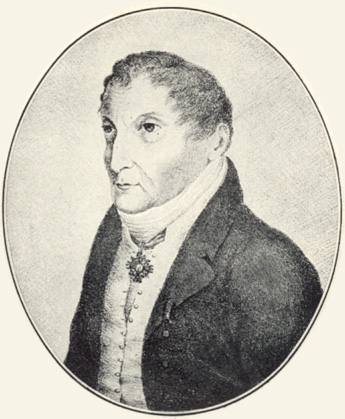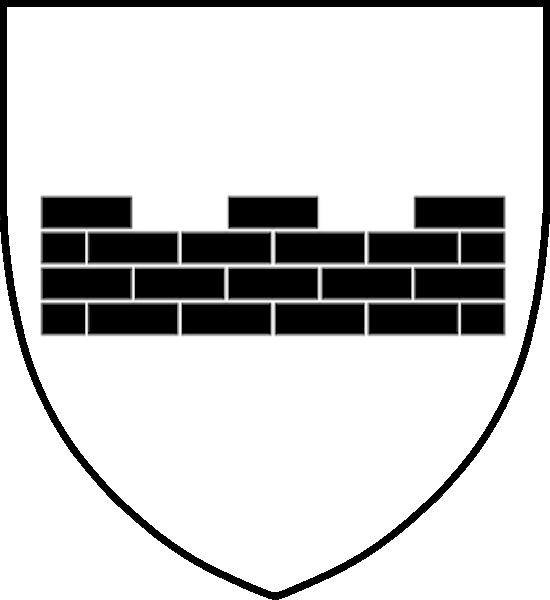|
Tuhala
Tuhala is a village in Kose Parish, Harju County in northern Estonia. As of 2011 Census, the settlement's population was 105. It is believed that settlement in Tuhala dates back around 3,000 years. Tuhala Karst Area, named after the village, lies for the most part in neighbouring Kata village. It has Estonia's largest area of porous karst, with several underground rivers and sinkholes. The karst area is best known for its Witch's Well (also in Kata). Tuhala Manor Tuhala Manor was first mentioned in 1468 as ''Toall''. During times it belonged to several Baltic German families: Tödwen (1468–1517); Delwig (1517 – mid-16th century); Ulrich (?–1663); Wrangell (1663–1693); Mellin (1692–1863); Lilienfeld (1863–1919). Famous cartographer Ludwig August Mellin, was born in the manor. The last main building had two storeys and was built ca. 1800. The Early-classical appearance was changed to more Neoclassical in the 1880s. The manor was burned down during the Revolution of ... [...More Info...] [...Related Items...] OR: [Wikipedia] [Google] [Baidu] |
Tuhala Witch's Well
Tuhala Witch's Well ( et, Tuhala nõiakaev) is a karst spring in Kose Parish, Harju County, Estonia that overflows after heavy rains. In Estonian folklore, it is said to be caused by witches lashing each other underground. In 2012 the Tuhala Witch's Well was voted as a "Wonder of Estonia". References Further reading *Loodusmälestised 22. Harjumaa-Raplamaa, Kohila karstivaldkond. Kose, Kohila. Compiled by Hella Kink. Edited by Anto Raukas. Teaduste Akadeemia Kirjastus. Tallinn 2011. * Marju Kõivupuu. 101 Eesti pühapaika. Tallinn: Varrak 2011, pp 190–193. *Ants Talioja. Tuhala radadel. OÜ Kadmirell. Tallinn 2012. *Gustav Vilbaste Gustav Vilbaste (until 1935 Gustav Vilberg; 3 September 1885 in Haavakannu, Kodasoo Parish – 21 February 1967 in Tallinn) was an Estonian botanist, publicist and conservationist. He wrote the first Estonian-language keybooks on Estonian flo .... Loodusvaatleja nr 4/5 september 1936. Special number of Kose. External links Entry in visit ... [...More Info...] [...Related Items...] OR: [Wikipedia] [Google] [Baidu] |
Kose Parish
Kose Parish ( et, Kose vald) is a rural municipality in northern Estonia. It is a part of Harju County. The municipality has a population of 5,737 (as of 1 January 2004) and covers an area of . The population density is 24.2 inhabitants per km2. In October 2013, neighbouring Kõue Parish was merged with Kose Parish. Administrative centre of the Municipalities is the small borough ( et, alevik) of Kose. There are total of 5 small boroughs ( Ardu, Habaja, Kose, Kose-Uuemõisa and Ravila) and 58 villages in Kose Parish: Aela, Ahisilla, Äksi, Alansi, Harmi, Kadja, Kanavere, Kantküla, Karla, Kata, Katsina, Kirivalla, Kiruvere, Kolu, Kõrvenurga, Kõue, Krei, Kuivajõe, Kukepala, Laane, Leistu, Liiva, Lööra, Lutsu, Marguse, Nõmbra, Nõmmeri, Nõrava, Nutu, Ojasoo, Oru, Pala, Palvere, Paunaste, Paunküla, Puusepa, Rava, Raveliku, Riidamäe, Rõõsa, Saarnakõrve, Sääsküla, Sae, Saula, Sõmeru, Silmsi, Tade, Tammiku, Triigi, Tuhala, Uueves ... [...More Info...] [...Related Items...] OR: [Wikipedia] [Google] [Baidu] |
Kata, Estonia
Kata is a village in Kose Parish, Harju County in northern Estonia Estonia, formally the Republic of Estonia, is a country by the Baltic Sea in Northern Europe. It is bordered to the north by the Gulf of Finland across from Finland, to the west by the sea across from Sweden, to the south by Latvia, a .... (retrieved 27 July 2021) References Villages in Harju County {{Harju-geo-stub ... [...More Info...] [...Related Items...] OR: [Wikipedia] [Google] [Baidu] |
Harju County
Harju County ( et, Harju maakond or ''Harjumaa''), is one of the fifteen counties of Estonia. It is situated in Northern Estonia, on the southern coast of the Gulf of Finland, and borders Lääne-Viru County to the east, Järva County to the southeast, Rapla County to the south, and Lääne County to the southwest. The capital and largest city of Estonia, Tallinn, is situated in Harju County. Harju County is the largest county in Estonia in terms of population, as almost half (45%) of the Estonia's population lives in Harju County. History Ancient history The territory of modern Harju County consists mostly of two ancient Estonian counties: Revala, around what is now Tallinn, and Harjumaa, which was situated south of Revala and presently rests mostly in Rapla County. Lindanise, then a small trading post at the Gulf of Finland, served as the capital of Revala. It eventually grew into the mostly German-populated Hanseatic town of ''Reval'' and later into the Estonian cap ... [...More Info...] [...Related Items...] OR: [Wikipedia] [Google] [Baidu] |
Ludwig August Mellin
Count Ludwig August Mellin (23 January 1754 in Tuhala, Governorate of Reval – 12 March 1835 in Riga, Governorate of Livonia) was a Baltic German politician, cartographer, writer and publicist. He is best known for creating the first professional atlas visualizing Livonia (area now divided between Estonia and Latvia), the ''Atlas von Liefland, oder von den beyden Gouvernementern u. Herzogthümern Lief- und Ehstland, und der Provinz Oesel'' in 1798. He was born in Tuhala, Estonia. He visited Riga in 1782. Mellin, a soldier in the Imperial Russian Army, became a cartographer at the request of Paul I of Russia, who wanted to see a map of Livonia. Since a professional map did not exist, Mellin was put in charge of creating it. In 1798, the ''Atlas von Liefland, oder von den beyden Gouvernementern u. Herzogthümern Lief- und Ehstland, und der Provinz Oesel'', was published by Mellin. It took 28 years to complete it. Mellin used maps from private collections, the military, and the ... [...More Info...] [...Related Items...] OR: [Wikipedia] [Google] [Baidu] |
Pirita River
The Pirita ( et, Pirita jõgi) is a long river in northern Estonia that drains into Tallinn Bay (part of the Gulf of Finland) in Pirita, Tallinn. The basin area of the Pirita is 799 km2. For the 1980 Summer Olympics held in Moscow, the estuary to the Gulf of Finland at Tallinn Bay hosted the sailing events. Volume 2. Part 1. pp. 241-58. As part of the Tallinn water supply system, the Pirita is impounded into the Paunküla and Vaskjala Reservoirs. The reservoir in [...More Info...] [...Related Items...] OR: [Wikipedia] [Google] [Baidu] |
Hjalmar Mäe
Hjalmar-Johannes Mäe ( in Tuhala, Kreis Harrien, Governorate of Estonia, Russian Empire – 10 April 1978 in Graz, Austria) was an Estonian politician. Mäe was twice a candidate to the Riigikogu, in the 1929 Estonian parliamentary election as a Landlords' Party candidate and in the 1932 Estonian parliamentary election as a National Centre Party candidate. Later he joined the Vaps Movement. He was the Head of the Directorate of the Estonian Self-Administration, which was subordinate to Reichskommissariat Ostland, during the occupation of Estonia by Nazi Germany, and took part in the first investigation of the Nemmersdorf massacre The Nemmersdorf massacre was a civilian massacre perpetrated by Red Army soldiers in the late stages of World War II. Nemmersdorf (present-day Mayakovskoye, Kaliningrad Oblast) was one of the first prewar ethnic German settlements to fall to .... References 1901 births 1978 deaths People from Kose Parish People from Kreis Harrien ... [...More Info...] [...Related Items...] OR: [Wikipedia] [Google] [Baidu] |
New York Times
''The New York Times'' (''the Times'', ''NYT'', or the Gray Lady) is a daily newspaper based in New York City with a worldwide readership reported in 2020 to comprise a declining 840,000 paid print subscribers, and a growing 6 million paid digital media, digital subscribers. It also is a producer of popular podcasts such as ''The Daily (podcast), The Daily''. Founded in 1851 by Henry Jarvis Raymond and George Jones (publisher), George Jones, it was initially published by Raymond, Jones & Company. The ''Times'' has won List of Pulitzer Prizes awarded to The New York Times, 132 Pulitzer Prizes, the most of any newspaper, and has long been regarded as a national "newspaper of record". For print it is ranked List of newspapers by circulation, 18th in the world by circulation and List of newspapers in the United States, 3rd in the U.S. The paper is owned by the New York Times Company, which is Public company, publicly traded. It has been governed by the Sulzberger family since 189 ... [...More Info...] [...Related Items...] OR: [Wikipedia] [Google] [Baidu] |
Revolution Of 1905
The Russian Revolution of 1905,. also known as the First Russian Revolution,. occurred on 22 January 1905, and was a wave of mass political and social unrest that spread through vast areas of the Russian Empire. The mass unrest was directed against the Tsar, nobility, and ruling class. It included worker strikes, peasant unrest, and military mutinies. In response to the public pressure, Tsar Nicholas II enacted some constitutional reform (namely the October Manifesto). This took the form of establishing the State Duma, the multi-party system, and the Russian Constitution of 1906. Despite popular participation in the Duma, the parliament was unable to issue laws of its own, and frequently came into conflict with Nicholas. Its power was limited and Nicholas continued to hold the ruling authority. Furthermore, he could dissolve the Duma, which he often did. The 1905 revolution was primarily spurred by the international humiliation as a result of the Russian defeat in the Russo-Japa ... [...More Info...] [...Related Items...] OR: [Wikipedia] [Google] [Baidu] |
Neoclassical Architecture
Neoclassical architecture is an architectural style produced by the Neoclassical movement that began in the mid-18th century in Italy and France. It became one of the most prominent architectural styles in the Western world. The prevailing styles of architecture in most of Europe for the previous two centuries, Renaissance architecture and Baroque architecture, already represented partial revivals of the Classical architecture of ancient Rome and (much less) ancient Greek architecture, but the Neoclassical movement aimed to strip away the excesses of Late Baroque and return to a purer and more authentic classical style, adapted to modern purposes. The development of archaeology and published accurate records of surviving classical buildings was crucial in the emergence of Neoclassical architecture. In many countries, there was an initial wave essentially drawing on Roman architecture, followed, from about the start of the 19th century, by a second wave of Greek Revival architec ... [...More Info...] [...Related Items...] OR: [Wikipedia] [Google] [Baidu] |
Wrangel Family
Wrangel (sometimes transliterated as Wrangell or Vrangel, from the Russian ''Вра́нгель'') is a Baltic German noble family, whose members have also been included in Swedish, Russian, Spanish and Prussian nobility. The family's earliest known patrilineal ancestor is the knight Eilardus (1241†). Notable members * Herman Wrangel (ca.1584-1643), a Swedish Governor-General of Livonia, Field Marshal, and Privy Councillor * Carl Henrik Wrangel (1681–1755), a Swedish Field Marshal * Carl Gustaf Wrangel (1613–1676), a Swedish soldier and Privy Councillor (son of Herman Wrangel) * Heinrich Johann Freiherr Wrangell from Addinal ('' Andrei Ivanovich Wrangel'', 1736–1813), Russian General-Lieutenant * Friedrich Heinrich Ernst Graf von Wrangel (1784-1877), a ''Generalfeldmarschall'' of the Prussian Army. * Ferdinand von Wrangel (''Ferdinand Petrovich Wrangel'', 1797–1870), Imperial Russian Navy admiral, Arctic explorer, Governor of Russian Alaska * Ferdinand Georg Friedrich ... [...More Info...] [...Related Items...] OR: [Wikipedia] [Google] [Baidu] |
Populated Places In Estonia
Populated places in Estonia (officially: settlement units), are cities or settlement units of rural municipalities, but only cities have administrative functions. Settlement units are divided into settlements and urban regions et, asum (subdivisions of cities). Officially there are five types of settlement units in Estonia: *town/city ( et, linn) *town without municipal status () *borough () *small borough () *village () See also * Municipalities of Estonia *List of cities and towns in Estonia *Counties of Estonia Counties ( et, maakond, plural ') are the first-level administrative subdivisions of Estonia. Estonian territory is composed of 15 counties, including 13 on the mainland and 2 on islands. The government (') of each county is led by a ' (gover ... Notes External links Place Names Board of Estonia [...More Info...] [...Related Items...] OR: [Wikipedia] [Google] [Baidu] |



.png)
_-_facade_on_Piazza_dei_signori.jpg)

